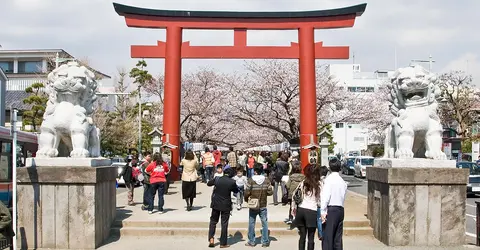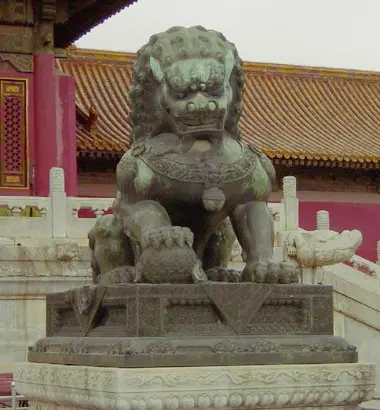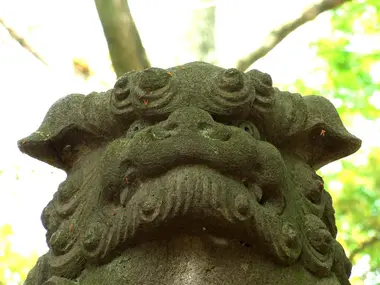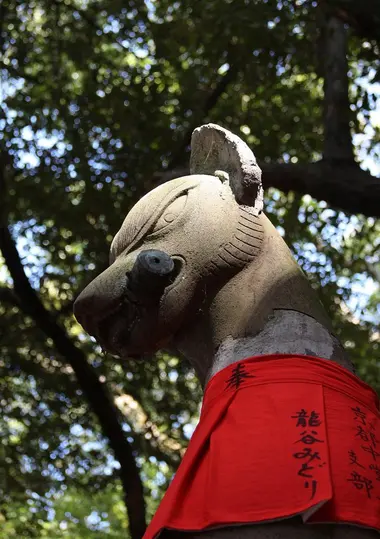Komainu, the guardians of the temples 狛犬
- Published on : 21/12/2018
- by : Ph.L
- Youtube

The komainu, the guardians of the shrines
Flick/Buntschli
Two lion-dogs to protect Buddha
Who has heard of the Komainu? Located at the entrance to places of worship, these lion-dog statues are emblematic of the Japanese landscape. They are found not only in Buddhist temples but also in some Shinto shrines to protect the deity that welcomes them. Their mission? Drive back evil spirits and thus preserve the tranquility of the place they are protecting! An important function, which the Komainu actually inherited from the Shishi, their ancestors from China...
Descendants of Shishi
Appearing under the Han dynasty (206 BC-220 AD) when the Persian Empire offered a real lion to the Chinese Empire, the Shishi are stone statues modeled in the image of the king of animals.
The emperor was conquered by the force of the Persian feline, the latter indeed decided to make stone replicas of them to be placed in front of the Buddhist temples and the houses of the nobles for protection. The statues were then installed in pairs: the female on the left of the entrance holding a lion cub under her paw to symbolize education, and the male on the right with a globe to represent political power, two notions on which the Middle Kingdom-based omnipotence at the time.
Shishi pairs thus flourished in China for decades before reaching Japanese shores. And it was only during the 5th century that the lion statues arrived in the land of the rising sun. They will then be re-adapted to the taste of the Japanese to give birth to the Komainu, these half-dog half-lion guardians.
Half-dog half-lion protective statues
Although the Japanese goalkeepers are the direct descendants of the Shishi, they differ from their elders on many points.
Unlike Chinese guardians, which are made of bronze or stone, Japanese statues are first carved from wood. A difference in manufacture means that they are not found in front of the temples, but inside them so that they do not suffer damage from the weather. Their arrangement is also different there since the two statues do not have the same appearance: one of them represents a horned lion, while the other takes the appearance of an animal half-dog half-lion which is called "Komainu".
To go further: Onigawara, architectural demon
This cult of difference, Japanese statues will continue to cultivate over time. And in the 14th century, Japanese statues are still evolving to completely emancipate themselves from the Shishi model.
They are now carved in stone, which allows them to return to their original position at the entrance to places of worship, and they become more harmonious by displaying a unique design: that of the Komainu.
The only difference that will remain between the two goalkeepers? Their mouth!
Indeed, the goalkeeper on the left has his mouth closed while his sidekick on the right keeps his mouth open. A difference which is explained in the function granted to the guards, since the first statue would close the mouth to make the sound "um" (which designates death in Sanskrit) while the second would keep it open to pronounce the sound "a". (which refers to the first breath of life). Together, they would thus form the sound "aum" which is also found in monastic chants during the reading of the sutras, and which would allow them to protect the places.

A pair of Komainu
Wikimedia
Towards ever more original designs?
From the Edo period (1603-1868), some Shinto shrines also adopted Komainu.
This is particularly the case with Inari shrines, where foxes have completely replaced lion-dogs.
Equipped respectively with a ball and a sutra to symbolize the world and education, like their ancestors the Shishi, the Inari guardians indeed take the form of the deity they protect. A clever way to pay homage to the divinity of the harvest, which also allows them to stand out from the statues of Buddhist temples.
Indeed, most Shinto shrines equipped with guardians have been original! And from tigers to horses, to wild boars, you can find a whole bunch of unusual statues at the entrance to the torii. Like the Hie-jinja sanctuary in Tokyo (Nagatacho), for example, which opted for an unusual animal for a guardian: the monkey!
See also: Hie-jinja Shrine












